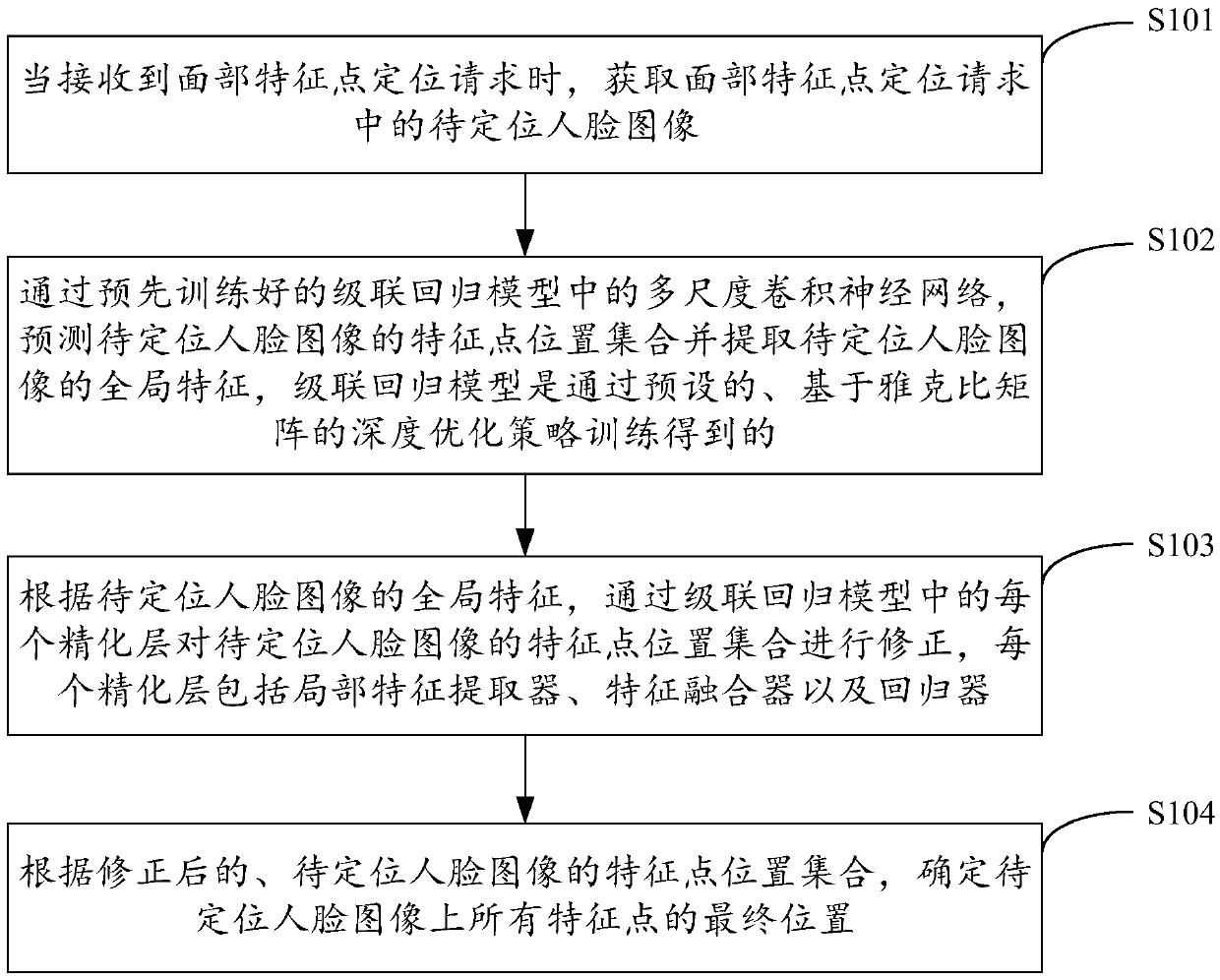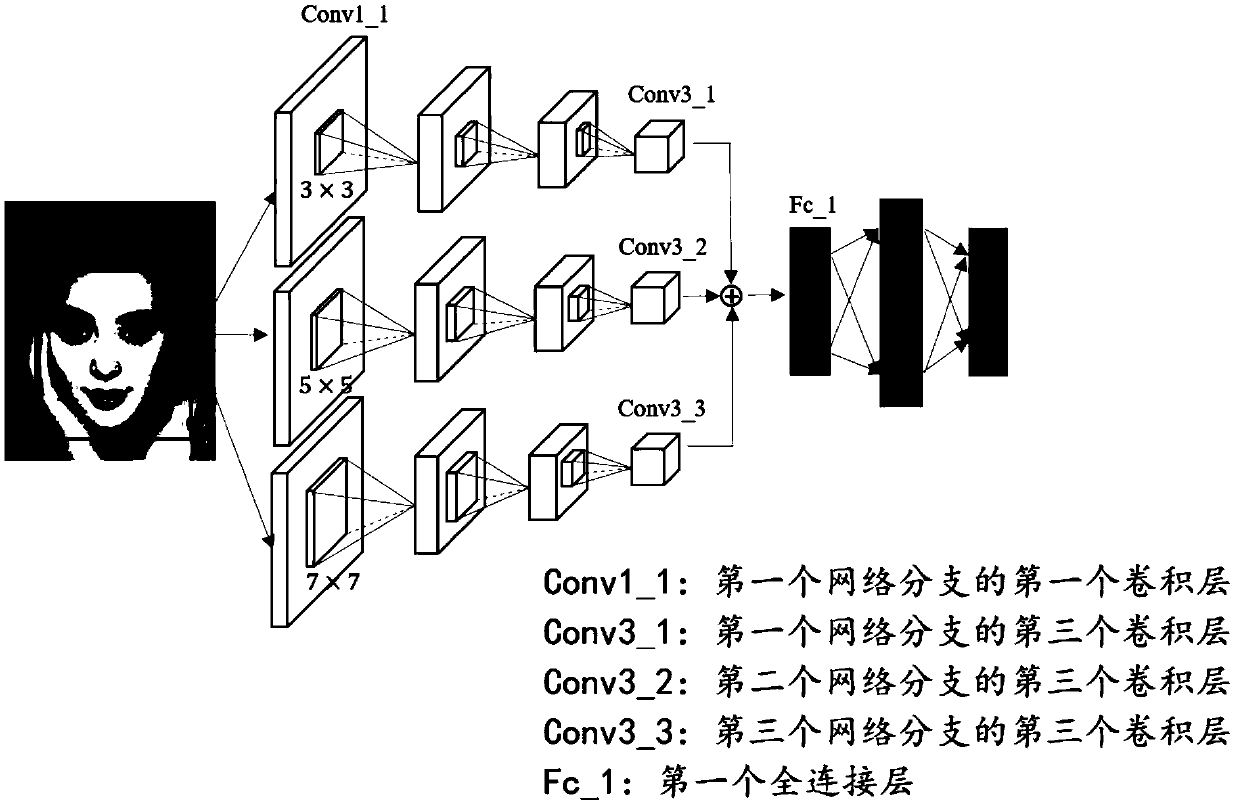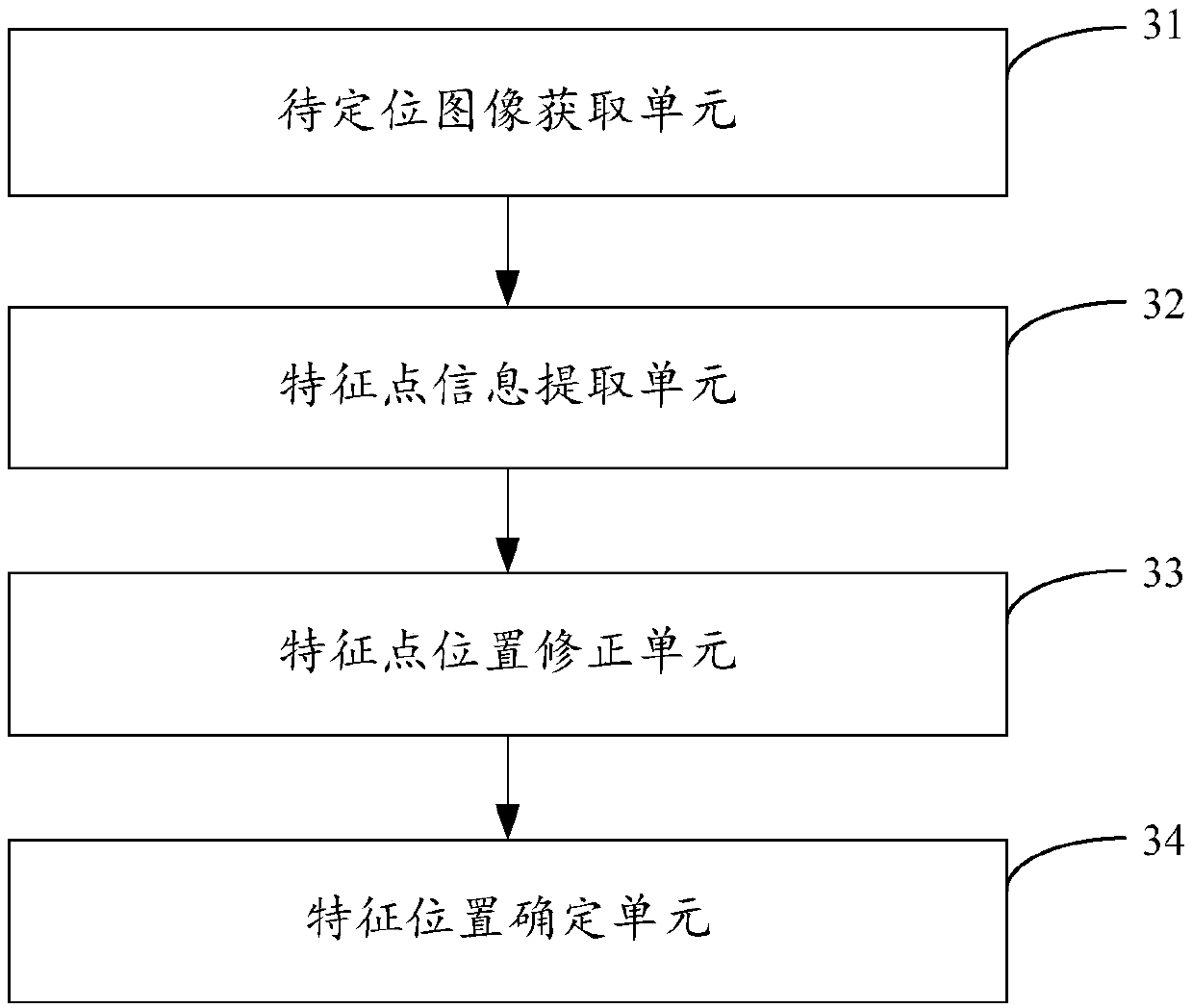Facial feature point positioning method, device, apparatus and medium based on cascade regression
A cascade regression, facial feature technology, applied in the field of image processing, can solve the problems of poor training effect of face image texture information model, low facial feature point positioning accuracy, poor effect, etc., so as to improve the utilization effect and improve the Accuracy and accuracy, the effect of improving the training effect
- Summary
- Abstract
- Description
- Claims
- Application Information
AI Technical Summary
Problems solved by technology
Method used
Image
Examples
Embodiment 1
[0026] figure 1 It shows the implementation flow of the method for locating facial feature points based on cascaded regression provided by Embodiment 1 of the present invention. For the convenience of explanation, only the parts related to the embodiment of the present invention are shown, and the details are as follows:
[0027] In step S101, when a facial feature point location request is received, the face image to be positioned in the facial feature point location request is acquired.
[0028] The embodiments of the present invention are applicable to facial feature point positioning platforms or systems. Obtain the face image to be located in the facial feature point positioning request, and then perform facial feature point positioning on the face image to be located.
[0029] In step S102, the multi-scale convolutional neural network in the pre-trained cascade regression model is used to predict the set of feature points of the face image to be located and extract the ...
Embodiment 2
[0070] image 3 The structure of the cascaded regression-based facial feature point locating device provided in Embodiment 2 of the present invention is shown. For the convenience of description, only the parts related to the embodiment of the present invention are shown, including:
[0071] The image-to-be-located acquisition unit 31 is configured to acquire the face image to be located in the facial feature point location request when receiving the facial feature point location request.
[0072] The feature point information extraction unit 32 is used to predict the set of feature point positions of the face image to be positioned and extract the global features of the face image to be positioned through the multi-scale convolutional neural network in the pre-trained cascade regression model. The joint regression model is trained through a preset deep optimization strategy based on the Jacobian matrix.
[0073] In the embodiment of the present invention, the cascade regress...
Embodiment 3
[0114] Figure 5 The structure of the image processing device provided by the third embodiment of the present invention is shown, and for the convenience of description, only the parts related to the embodiment of the present invention are shown.
[0115] The image processing device 5 of the embodiment of the present invention includes a processor 50 , a memory 51 , and a computer program 52 stored in the memory 51 and operable on the processor 50 . When the processor 50 executes the computer program 52, the steps in the above-mentioned method embodiments are realized, for example figure 1 Steps S101 to S104 are shown. Alternatively, when the processor 50 executes the computer program 52, the functions of the units in the above-mentioned device embodiments are realized, for example image 3 Function of units 31 to 34 shown.
[0116] In the embodiment of the present invention, the multi-scale convolutional neural network in the trained cascade regression model is used to pre...
PUM
 Login to View More
Login to View More Abstract
Description
Claims
Application Information
 Login to View More
Login to View More - R&D
- Intellectual Property
- Life Sciences
- Materials
- Tech Scout
- Unparalleled Data Quality
- Higher Quality Content
- 60% Fewer Hallucinations
Browse by: Latest US Patents, China's latest patents, Technical Efficacy Thesaurus, Application Domain, Technology Topic, Popular Technical Reports.
© 2025 PatSnap. All rights reserved.Legal|Privacy policy|Modern Slavery Act Transparency Statement|Sitemap|About US| Contact US: help@patsnap.com



